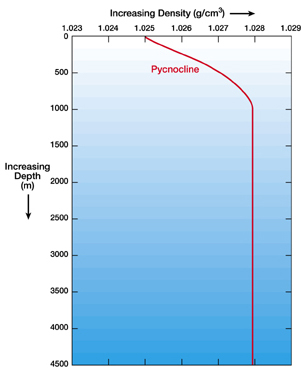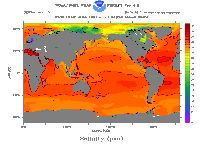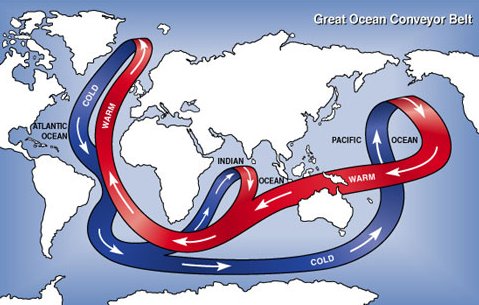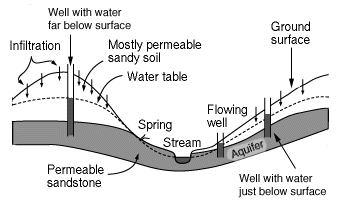Click on image for full size
Windows to the Universe original image
Density of Ocean Water
The density of ocean water at the sea surface is about 1027 kg/m3. The two main factors that affect density of ocean water are the temperature of the water and the salinity of the water. The density of ocean water continuously increases with decreasing temperature until the water freezes. Ocean water, with an average salinity of 35 psu, freezes at 28.5oF (-1.94oC). Increasing salinity also increases the density of sea water.Temperature has a greater effect on the density of water than salinity does. So a parcel of water with higher salinity can actual float on top of water with lower salinity if the parcel with higher salinity is quite a bit warmer than the lower salinity parcel.
Whereas the circulation of surface waters of the ocean are driven by winds, the circulation of the deep waters are driven by density differences. Circulation in the depths of the ocean is referred to as thermohaline circulation. The deep ocean is layered with the densest water on bottom and the lightest water on top. Water tends to move horizontally throughout the deep ocean, moving along lines of equal density. Vertical circulation is thus limited because it is easier for water to move along lines of constant density (isopycnals) than across them.
The density of ocean water is rarely measured directly. If you wanted to measure the density of ocean water, you would have to collect a sample of sea water and bring it back to the laboratory to be measured. Density is usually calculated from in situ measurements of salinity, temperature and pressure. These in situ measurements are often made with a CTD instrument, where the instrument is placed in the ocean water from a ship or a platform. Once salinity, temperature and pressure have been measured, density can be derived from an equation called the equation of state of sea water.














